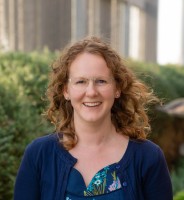Extreme Weather Events
Severe Storms & Precipitation
Floods & Tsunamis
Climate Change
Natural Catastrophes
Climate Adaptation & Resilience
Sea-level Rise & Erosion
Post-Doctoral Fellowships
Singapore
2016.08.31
Investigating how flooding hazards will evolve and affect the South China Sea region under changing climate
Measuring the probability of an aggravation of coastal flooding events in the future
To assess the future flooding hazards in the South China Sea, Dr. Linlin Li and her team will adopt a probabilistic approach of the Monte-Carlo type – named after the city in Monaco famous for its casino and games of chance. This type of method can be used to model phenomenons with significant uncertainty, as is the case with calculations of risk. In much the same way as games of chance, risk assessments involves uncertainties which, if computed, can be translated into quantified probabilities. By integrating large numbers of tsunami and storm surge simulations, Dr. Linlin Li intends to use this method to assess the present-day flooding hazards in the region. The focus will be on megacities such as Macau, Kaohsiung, Zhuhai, Singapore, Hong Kong or Manila. The team will then investigate the effect of climate-induced changes such as sea level rise or changing winds patterns on these flooding hazards. To develop comprehensive flooding risk assessments for each of the megacities studied, the last step will be to incorporate data on population exposure and vulnerability. With her comprehensive scope analysis of the South China Sea’s flooding risks, Dr Li aims to determine which areas will be the most at risk and why, in order to provide a solid working base for the improvement of resilience in the region.
“With this project, my team and I aim to provide invaluable synthetic information to people living in high-risk areas, as well as to professionals in the field of emergency management, insurance, urban planning, and engineering”, explains Dr. Linlin Li. Not only will her study benefit resilience in the South China Sea region, her approach and method also has the potential to become an example to follow for the other Pacific countries vulnerable to such natural disasters.

Linlin
LI
Institution
Nanyang Technological University
Earth Observatory of Singapore (EOS)
Country
Singapore
Nationality
Chinese
Related articles
Sustainable Living & City
Climate Change
Climate Adaptation & Resilience
Urban Planning
Resilient Infrastructure & Safety
Environmental Justice
Post-Doctoral Fellowship
Australia
2023.06.20
Indicators for Climate Resilient City Planning
Expected start date:June-2023 Cities contribute enormously to global greenhouse emissions and are key drivers of climate change. By the same... Read more

Melanie
LOWE

